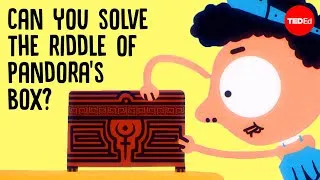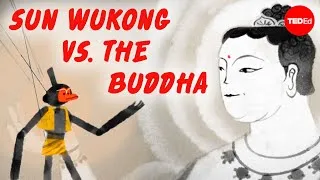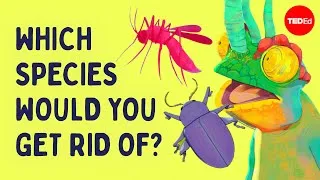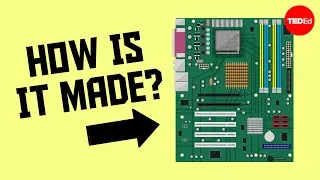請雙擊下方英文字幕播放視頻。
譯者: Ching-Yi Wu
審譯者: Joan Liu
00:25
I work with a species called "Bonobo."
0
25000
3000
我研究矮黑猩猩
00:28
And I'm happy most of the time,
1
28000
2000
工作時,我多半是快樂的
00:30
because I think this is the happiest species on the planet.
2
30000
3000
因為我覺得牠們是地球上最快樂的物種
00:33
It's kind of a well-kept secret.
3
33000
3000
這點還不太為人所知
00:36
This species lives only in the Congo.
4
36000
2000
矮黑猩猩只棲息在剛果
00:38
And they're not in too many zoos, because of their sexual behavior.
5
38000
6000
由於交配習性的關係,牠們很少出現在動物園
00:44
Their sexual behavior is too human-like
6
44000
2000
牠們的交配習性太像人了
00:46
for most of us to be comfortable with.
7
46000
2000
也就是我們習慣的那樣
00:48
(Laughter)
8
48000
1000
(笑)
00:49
But --
9
49000
1000
但是......
00:50
(Laughter)
10
50000
1000
(笑)
00:51
actually, we have a lot to learn from them, because they're a very
11
51000
5000
事實上,我們得向牠們學習的很多
00:56
egalitarian society and they're a very empathetic society.
12
56000
4000
牠們有著非常公平且富同理心的社會
01:00
And sexual behavior is not confined to one aspect of their life
13
60000
4000
交配行為並不因只是生活的一部分
01:04
that they sort of set aside.
14
64000
3000
而被忽略
01:07
It permeates their entire life.
15
67000
2000
反之,這是牠們生活的全部
01:09
And it's used for communication.
16
69000
3000
可以用來溝通
01:12
And it's used for conflict resolution.
17
72000
2000
可以用來化解衝突
01:14
And I think perhaps somewhere in our history we sort of,
18
74000
4000
我想,或許是在人類歷史的某個時間點
01:18
divided our lives up into lots of parts.
19
78000
3000
開始把生活分成好幾個部分
01:21
We divided our world up with lots of categories.
20
81000
4000
把世界切割成不同地域
01:25
And so everything sort of has a place that it has to fit.
21
85000
3000
每件事都得被歸檔在正確的位置
01:28
But I don't think that we were that way initially.
22
88000
4000
但我不認為我們的祖宗是這樣的
01:32
There are many people who think that the animal world is hard-wired
23
92000
4000
很多人認為,動物凡事但憑反射直覺
01:36
and that there's something very, very special about man.
24
96000
4000
人類是非常非常特別的物種
01:40
Maybe it's his ability to have causal thought.
25
100000
4000
或許是思考的能力
01:44
Maybe it's something special in his brain
26
104000
3000
或許是大腦有什麼特出之處
01:47
that allows him to have language.
27
107000
2000
讓人類發展出語言
01:49
Maybe it's something special in his brain
28
109000
3000
或許是大腦的特殊之處
01:52
that allows him to make tools or to have mathematics.
29
112000
5000
讓人類能夠使用工具跟計算
01:57
Well, I don't know. There were Tasmanians who were discovered
30
117000
6000
是嗎?我不知道。十六世紀的時候
02:03
around the 1600s and they had no fire.
31
123000
4000
探險家發現了塔斯馬尼亞人。他們不用火
02:07
They had no stone tools.
32
127000
3000
也沒有石器
02:10
To our knowledge they had no music.
33
130000
3000
就我所知,他們也沒有音樂
02:14
So when you compare them to the Bonobo,
34
134000
3000
將矮黑猩猩跟塔斯馬尼亞人一起比較
02:19
the Bonobo is a little hairier.
35
139000
2000
除了矮黑猩猩毛多了些
02:21
He doesn't stand quite as upright.
36
141000
4000
跟不太能直立站著外
02:26
But there are a lot of similarities.
37
146000
2000
兩者有許多相似性
02:29
And I think that as we look at culture,
38
149000
4000
我認為,研究文化
02:33
we kind of come to understand
39
153000
3000
能夠幫助我們了解
02:36
how we got to where we are.
40
156000
2000
我們是如何成為人
02:38
And I don't really think it's in our biology;
41
158000
3000
我不認為是我們的生物性讓我們變成人
02:41
I think we've attributed it to our biology,
42
161000
2000
是「成為人」這件事影響了我們的生物性
02:43
but I don't really think it's there.
43
163000
3000
生物性跟「成為人」無關
02:46
So what I want to do now is introduce you
44
166000
2000
所以,我想跟各位分享的是
02:48
to a species called the Bonobo.
45
168000
2000
矮黑猩猩這種生物
02:52
This is Kanzi.
46
172000
2000
這是Kanzi
02:54
He's a Bonobo.
47
174000
2000
一隻矮黑猩猩
02:56
Right now, he's in a forest in Georgia.
48
176000
3000
目前,牠住在喬治亞州的森林
02:59
His mother originally came from a forest in Africa.
49
179000
4000
牠的媽媽來自非洲的森林
03:03
And she came to us when she was just at puberty,
50
183000
4000
我們見到牠時,牠才剛進入青春期
03:07
about six or seven years of age.
51
187000
2000
大概六七歲吧
03:10
Now this shows a Bonobo on your right,
52
190000
2000
畫面上的右邊是一隻矮黑猩猩
03:12
and a chimpanzee on your left.
53
192000
1000
左邊是黑猩猩
03:14
Clearly, the chimpanzee has a little bit harder time of walking.
54
194000
4000
顯然的,黑猩猩比較不擅長行走
03:18
The Bonobo, although shorter than us and their arms still longer,
55
198000
4000
雖然矮黑猩猩比我們矮,手臂較長
03:22
is more upright, just as we are.
56
202000
4000
但比黑猩猩更能直立,像我們一樣行走
03:26
This shows the Bonobo compared to an australopithecine like Lucy.
57
206000
5000
再比較矮黑猩猩跟與露西一類的南猿
03:31
As you can see, there's not a lot of difference
58
211000
3000
矮黑猩猩的行走模式
03:34
between the way a Bonobo walks
59
214000
2000
跟南猿可能的行走方式
03:36
and the way an early australopithecine would have walked.
60
216000
4000
並沒有太大不同
03:40
As they turn toward us you'll see
61
220000
2000
觀察牠們的正面觀,可以注意到
03:42
that the pelvic area of early australopithecines is a little flatter
62
222000
5000
早期南猿的骨盆腔較平
03:47
and doesn't have to rotate quite so much from side to side.
63
227000
4000
在兩腳交互移動時沒有太多的旋轉
03:51
So the -- the bipedal gait is a little easier.
64
231000
2000
因此,使用兩腳行走較容易
03:53
And now we see all four.
65
233000
2000
這是上述四個物種的比較
03:56
Video: Narrator: The wild Bonobo lives in central Africa, in the jungle
66
236000
4000
影片中是棲息在中非的矮黑猩猩
04:00
encircled by the Congo River.
67
240000
3000
牠們住在由剛果河包圍的叢林裡
04:05
Canopied trees as tall as 40 meters, 130 feet,
68
245000
4000
這地區的林冠茂密
04:09
grow densely in the area.
69
249000
4000
有40公尺高,也就是130英呎
04:13
It was a Japanese scientist
70
253000
3000
有個日本科學家®
04:16
who first undertook serious field studies of the Bonobo,
71
256000
4000
開始了矮黑猩猩的田野調查
04:20
almost three decades ago.
72
260000
3000
大概是三十年前
04:26
Bonobos are built slightly smaller than the chimpanzee.
73
266000
4000
矮黑猩猩比黑猩猩個頭略小
04:30
Slim-bodied, Bonobos are by nature very gentle creatures.
74
270000
5000
身材也瘦,天生是非常溫馴的動物
04:36
Long and careful studies have reported many new findings on them.
75
276000
5000
幾個長期追蹤的嚴謹研究,顯示一些新發現:
04:43
One discovery was that wild Bonobos often walk bidpedally.
76
283000
6000
首先:野生的矮黑猩猩常常利用雙腳行走
04:55
What's more, they are able to walk upright for long distances.
77
295000
5000
而且牠們還能直立地長途行走
05:07
Susan Savage-Rumbaugh (video): Let's go say hello to Austin first and then go to the A frame.
78
307000
3000
先去跟Austin打聲招呼,然後再去A區。
05:11
SS: This is Kanzi and I, in the forest.
79
311000
2000
SS: Kanzi跟我在森林裡
05:13
None of the things you will see in this particular video are trained.
80
313000
4000
影片裡所發生的是,沒有一個是經過訓練的結果
05:17
None of them are tricks.
81
317000
2000
也沒有一個是偽造的
05:19
They all happened to be captured on film spontaneously,
82
319000
3000
影片裡的一切都是自發行為
05:22
by NHK of Japan.
83
322000
2000
這是由日本NHK所拍攝的
05:25
We have eight Bonobos.
84
325000
2000
我們有八隻矮黑猩猩
05:27
Video: Look at all this stuff that's here for our campfire.
85
327000
2000
影片:請看營火旁有什麼
05:30
SS: An entire family at our research centre.
86
330000
3000
SS: 我們的研究中心有一整個黑猩猩家庭
05:38
Video: You going to help get some sticks?
87
338000
3000
影片:想幫忙撿柴火嗎?
05:42
Good.
88
342000
1000
很好
05:47
We need more sticks, too.
89
347000
2000
我們也需要些柴火
05:56
I have a lighter in my pocket if you need one.
90
356000
2000
如果你想要,我口袋裡有打火機
05:59
That's a wasps' nest.
91
359000
2000
那是個黃蜂巢
06:01
You can get it out.
92
361000
2000
你們可以拿出來
06:05
I hope I have a lighter.
93
365000
3000
希望我有打火機
06:08
You can use the lighter to start the fire.
94
368000
2000
這樣你就可以生火了
06:12
SS: So Kanzi is very interested in fire.
95
372000
2000
SS: 原來Kanzi對火有興趣
06:14
He doesn't do it yet without a lighter,
96
374000
3000
沒有打火機,牠就不會生火
06:17
but I think if he saw someone do it, he might be able to do --
97
377000
4000
不過,如果牠看別人做一次,牠也許就能
06:21
make a fire without a lighter.
98
381000
2000
不靠打火機生火
06:25
He's learning about how to keep a fire going.
99
385000
2000
牠正在學怎麼讓火繼續燒
06:28
He's learning the uses for a fire,
100
388000
2000
牠正在學著用火
06:31
just by watching what we do with fire.
101
391000
3000
但只敢看著我們用
06:34
(Laughter)
102
394000
2000
(笑)
06:43
This is a smile on the face of a Bonobo.
103
403000
2000
矮黑猩猩的臉上有著微笑
06:45
These are happy vocalizations.
104
405000
2000
這是開心的表示
06:47
Video: You're happy.
105
407000
2000
影片:你很開心啊
06:49
You're very happy about this part.
106
409000
2000
你很喜歡這個部分吧
06:51
You've got to put some water on the fire. You see the water?
107
411000
4000
你得把水潑在火上。看到水了沒?
07:00
Good job.
108
420000
2000
很好
07:03
SS: Forgot to zip up the back half of his backpack.
109
423000
3000
SS: 牠忘了要拉上背包的拉鍊
07:07
But he likes to carry things from place to place.
110
427000
2000
但牠很喜歡把東西帶來帶去
07:10
Video: Austin, I hear you saying "Austin."
111
430000
2000
影片:Austin, 我聽到你說Austin
07:12
SS: He talks to other Bonobos at the lab, long-distance,
112
432000
3000
SS: 牠可以跟位在遠處,聽不見這裡動靜的
07:15
farther than we can hear.
113
435000
2000
實驗室裡的矮黑猩猩溝通
07:18
This is his sister.
114
438000
2000
這是Kanzi的姐姐
07:20
This is her first time to try to drive a golf cart.
115
440000
3000
牠第一次試著開高爾夫球車
07:25
Video: Goodbye.
116
445000
2000
影片:拜拜!
07:27
(Laughter)
117
447000
2000
(笑)
07:29
SS: She's got the pedals down, but not the wheel.
118
449000
4000
SS: 牠踩下踏板,但沒有打方向盤
07:37
She switches from reverse to forward
119
457000
3000
讓車子從後退變成前進
07:40
and she holds onto the wheel, rather than turns it.
120
460000
2000
現在牠抓住方向盤,卻沒有轉動
07:42
(Laughter)
121
462000
3000
(笑)
07:45
Like us, she knows that that individual in the mirror is her.
122
465000
5000
跟人類一樣,牠知道鏡子裡的影像是自己
07:50
(Music)
123
470000
4000
(音樂)
07:54
Video: Narrator: By raising Bonobos in a culture that is both Bonobo and human,
124
474000
5000
影片:讓矮黑猩猩在融合了矮黑猩猩跟人類文化的環境中長大
07:59
and documenting their development across two decades,
125
479000
4000
並記錄牠們的成長長達二十多年
08:03
scientists are exploring how cultural forces
126
483000
3000
科學家得以了解文化力
08:06
(Laughter)
127
486000
1000
(笑)
08:07
may have operated during human evolution.
128
487000
3000
是如何影響人類演化的
08:12
His name is Nyota.
129
492000
2000
這是Nyota
08:14
It means "star" in Swahili.
130
494000
2000
在斯瓦希里語裡是星星的意思
08:16
(Music)
131
496000
7000
(音樂)
08:26
Panbanisha is trying to give Nyota a haircut with a pair of scissors.
132
506000
5000
Panbanisha正試著用一對剪刀幫Nyota剪頭髮
08:32
In the wild, the parent Bonobo is known to groom its offspring.
133
512000
5000
已知野生矮黑猩猩的家長會幫小孩理毛
08:37
Here Panbanisha uses scissors, instead of her hands,
134
517000
4000
現在Panbanisha正用剪刀而不是用手
08:41
to groom Nyota.
135
521000
2000
幫Nyota理毛
08:45
Very impressive.
136
525000
3000
很令人印象深刻吧
08:51
Subtle maneuvering of the hands is required
137
531000
3000
需要很精巧的手部運動
08:54
to perform delicate tasks like this.
138
534000
3000
才能進行這樣的工作喔
09:06
Nyota tries to imitate Panbanisha by using the scissors himself.
139
546000
5000
Nyota也學Panbanisha使用剪刀
09:13
Realizing that Nyota might get hurt,
140
553000
3000
Panbanish知道Nyota可能會受傷
09:16
Panbanisha, like any human mother,
141
556000
2000
跟所有的人類媽媽一樣
09:18
carefully tugs to get the scissors back.
142
558000
4000
牠小心地把剪刀拿回來
09:37
He can now cut through tough animal hide.
143
577000
3000
牠現在能用剪刀剪具韌性的動物皮毛
09:41
SS: Kanzi's learned to make stone tools.
144
581000
2000
SS: Kanzi正在學怎麼製作石器
09:43
Video: Kanzi now makes his tools,
145
583000
1000
影片:Kanzi正在做自己的工具
09:44
just as our ancestors may have made them,
146
584000
2000
就跟我們的祖先一樣
09:46
two-and-a-half million years ago --
147
586000
2000
兩百五十萬年前
09:48
by holding the rocks in both hands, to strike one against the other.
148
588000
5000
人類祖先靠著兩手拿著石頭互相撞擊
09:53
He has learned that by using both hands
149
593000
3000
學會如何使用雙手
09:56
and aiming his glancing blows,
150
596000
2000
學會一拳中的
09:58
he can make much larger, sharper flakes.
151
598000
4000
他能製作更大更尖銳的石片
10:02
Kanzi chooses a flake he thinks is sharp enough.
152
602000
3000
Kanzi挑了一片他認為夠尖的石片
10:10
The tough hide is difficult to cut, even with a knife.
153
610000
4000
即使使用刀子,皮毛也很難切斷
10:14
The rock that Kanzi is using is extremely hard
154
614000
3000
Kanzi用的石頭非常硬
10:17
and ideal for stone tool making, but difficult to handle,
155
617000
4000
很適合拿來做成工具,卻很難使用
10:21
requiring great skill.
156
621000
2000
需要很多的技巧
10:23
Kanzi's rock is from Gona, Ethiopia
157
623000
2000
Kanzi的石頭來自衣索匹亞的Gona
10:25
and is identical to that used by our African ancestors
158
625000
4000
跟我們的非洲祖先在兩百五十萬年前
10:29
two-and-a-half million years ago.
159
629000
2000
使用的一模一樣
10:34
These are the rocks Kanzi used
160
634000
3000
這是Kanzi用的石頭
10:37
and these are the flakes he made.
161
637000
2000
而這些是它做的石片
10:39
The flat sharp edges are like knife blades.
162
639000
4000
尖銳的切緣就跟刀鋒一樣
10:44
Compare them to the tools our ancestors used;
163
644000
3000
跟我們祖先使用的石器比較
10:47
they bear a striking resemblance to Kanzi's.
164
647000
3000
兩者相似得不可思議
11:00
Panbanisha is longing to go for a walk in the woods.
165
660000
3000
Panbanisha想到樹林裡走走
11:03
She keeps staring out the window.
166
663000
3000
牠盯著窗戶看
11:08
SS: This is -- let me show you something we didn't think they would do.
167
668000
3000
SS: 這...讓我給你們看些不可思議的事
11:11
Video: For several days now, Panbanisha has not been outside.
168
671000
5000
影片:Panbanisha已經有好幾天沒出去了
11:17
SS: I normally talk about language.
169
677000
2000
SS: 我常常談論語言
11:19
Video: Then Panbanisha does something unexpected.
170
679000
3000
影片:Panbanish做了件出乎人意料的事
11:22
SS: But since I'm advised not to do what I normally do,
171
682000
3000
SS: 但有人建議我別一成不變
11:25
I haven't told you that these apes have language.
172
685000
2000
我沒告訴你們這些猩猩有語言吧!
11:27
It's a geometric language.
173
687000
2000
這是種地理語言
11:29
Video: She takes a piece of chalk
174
689000
1000
影片:牠拿了粉筆
11:30
and begins writing something on the floor.
175
690000
2000
在地板上寫些東西
11:32
What is she writing?
176
692000
2000
寫些什麼呢?
11:40
SS: She's also saying the name of that, with her voice.
177
700000
4000
SS: 牠也有自己的聲音,能說出名字
11:44
Video: Now she comes up to Dr. Sue and starts writing again.
178
704000
3000
影片:現在牠在SS身邊,又開始寫
11:47
SS: These are her symbols on her keyboard.
179
707000
3000
SS: 這在牠的鍵盤上代表牠的符號
11:50
(Music)
180
710000
1000
(音樂)
11:51
They speak when she touches them.
181
711000
2000
在牠按觸鍵時,會發出聲音
11:53
Video: Panbanisha is communicating to Dr. Sue where she wants to go.
182
713000
3000
影片:Panbanisha正在跟Sue說牠要去哪裡
11:56
"A frame" represents a hut in the woods.
183
716000
4000
A區中的森林裡有頂帽子
12:00
Compare the chalk writing with the lexigram on the keyboard.
184
720000
4000
比較Kanzi用粉筆畫的跟鍵盤上的符號
12:14
Panbanisha began writing the lexigrams on the forest floor.
185
734000
4000
Panbanisha在森林地面上畫符號
12:20
SS (video): Very nice. Beautiful, Panbanisha.
186
740000
4000
很好,真漂亮啊,Panbanisha
12:24
SS: At first we didn't really realize what she was doing,
187
744000
3000
SS: 一開始我們不知道牠在做什麼
12:27
until we stood back and looked at it and rotated it.
188
747000
3000
直到我們退一步,並換個方向看
12:30
Video: This lexigram also refers to a place in the woods.
189
750000
2000
影片:這個符號表示林子裡一個地方
12:32
The curved line is very similar to the lexigram.
190
752000
4000
這條曲線跟那個符號很接近
12:39
The next symbol Panbanisha writes represents "collar."
191
759000
4000
牠畫的下一個符號代表項圈
12:43
It indicates the collar that Panbanisha must wear when she goes out.
192
763000
4000
也就是牠每回出門都得戴的項圈
12:47
SS: That's an institutional requirement.
193
767000
2000
SS: 這是研究機構的要求
12:50
Video: This symbol is not as clear as the others,
194
770000
3000
影片:這個符號沒有其他的清楚
12:53
but one can see Panbanisha is trying to produce a curved line
195
773000
5000
可以看到Panbanish正試著畫一條曲線
12:58
and several straight lines.
196
778000
2000
跟數條直線
13:00
Researchers began to record what Panbanisha said,
197
780000
4000
研究人員開始記錄Panbanisha
13:04
by writing lexigrams on the floor with chalk.
198
784000
4000
藉著畫畫想告訴我們什麼
13:08
Panbanisha watched.
199
788000
2000
Panbanisha看了看
13:10
Soon she began to write as well.
200
790000
3000
很快地牠就能畫出來
13:14
The Bonobo's abilities have stunned scientists around the world.
201
794000
4000
矮黑猩猩的學習能力震驚了全世界的科學家
13:18
How did they develop?
202
798000
2000
這樣的能力是怎麼來的?
13:20
SS (video): We found that the most important thing
203
800000
2000
SS: 我們最重要的發現是
13:22
for permitting Bonobos to acquire language is not to teach them.
204
802000
5000
要讓矮黑猩猩學會語言,並不需要教牠
13:27
It's simply to use language around them,
205
807000
3000
只要利用周遭的語言
13:30
because the driving force in language acquisition
206
810000
3000
因為學習語言的動力
13:33
is to understand what others, that are important to you, are saying to you.
207
813000
5000
是為了瞭解對自己重要的人在說什麼
13:38
Once you have that capacity,
208
818000
2000
一旦你有了語言能力
13:40
the ability to produce language
209
820000
3000
創造語言
13:43
comes rather naturally and rather freely.
210
823000
4000
是非常自然而隨興的事
13:47
So we want to create an environment in which Bonobos,
211
827000
3000
因此,我們想創造一個
13:50
like all of the individuals with whom they are interacting --
212
830000
4000
讓每一隻矮黑猩猩都能互動的環境
13:54
we want to create an environment in which they have fun,
213
834000
3000
讓每隻猩猩可以玩遊戲
13:57
and an environment in which the others
214
837000
2000
跟每一隻猩猩對其他猩猩
13:59
are meaningful individuals for them.
215
839000
3000
都有意義的環境
14:04
Narrator: This environment brings out unexpected potential
216
844000
3000
而這個環境讓Kanzi跟Panbanisha發展出
14:07
in Kanzi and Panbanisha.
217
847000
3000
不在我們預期中的能力
14:17
Panbanisha is enjoying playing her harmonica,
218
857000
4000
Panbanisha很喜歡吹口琴
14:21
until Nyota, now one year old, steals it.
219
861000
4000
直到有一天,口琴被現在已經一歲Nyota的偷了
14:25
Then he peers eagerly into his mother's mouth.
220
865000
4000
牠直盯著媽媽的嘴巴看
14:29
Is he looking for where the sound came from?
221
869000
2000
牠在找聲音從哪來的嗎?
14:32
Dr. Sue thinks it's important to allow such curiosity to flourish.
222
872000
4000
SS認為,讓這樣的好奇心得以醞釀是重要的
14:47
This time Panbanisha is playing the electric piano.
223
887000
3000
這次,Panbanisha在彈電子琴
14:50
She wasn't forced to learn the piano;
224
890000
3000
牠不是被逼著彈
14:53
she saw a researcher play the instrument and took an interest.
225
893000
4000
牠看到研究人員彈琴,感到興趣
15:25
Researcher: Go ahead. Go ahead. I'm listening.
226
925000
2000
繼續啊!繼續啊!我在聽呢
15:29
Do that real fast part that you did. Yeah, that part.
227
929000
3000
再彈一次你剛剛彈很快的部分。對,就是那裡
15:36
Narrator: Kanzi plays the xylophone;
228
936000
2000
Kanzi熱切地用兩手演奏木琴
15:38
using both hands he enthusiastically accompanies Dr. Sue's singing.
229
938000
5000
幫SS伴奏
15:44
Kanzi and Panbanisha
230
944000
1000
Kanzi跟Panbanisha都受到
15:45
are stimulated by this fun-filled environment,
231
945000
3000
這樣有趣的環境刺激
15:48
which promotes the emergence of these cultural capabilities.
232
948000
4000
讓牠們表現出這些文明的行為
15:56
(Laughter)
233
956000
2000
(笑)
16:06
Researcher: OK, now get the monsters. Get them.
234
966000
3000
現在,把鬼吃掉
16:09
Take the cherries too.
235
969000
2000
吃櫻桃
16:12
Now watch out, stay away from them now.
236
972000
3000
小心!離鬼遠一點
16:16
Now you can chase them again. Time to chase them.
237
976000
3000
現在可以追了,去追吧
16:23
Now you have to stay away. Get away.
238
983000
3000
現在得逃遠一點,跑
16:26
Run away. Run.
239
986000
3000
跑啊!跑!
16:29
Now we can chase them again. Go get them.
240
989000
4000
現在可以追了,吃掉吧
16:35
Oh no!
241
995000
1000
喔!不!
16:37
Good Kanzi. Very good. Thank you so much.
242
997000
3000
好,Kanzi,很好,謝謝
16:44
Narrator: None of us, Bonobo or human, can possibly even imagine?
243
1004000
7000
想不到吧?無論是人還是矮黑猩猩都想不到吧?
16:57
SS: So we have a bi-species environment, we call it a "panhomoculture."
244
1017000
7000
SS: 這樣讓人類跟矮黑猩猩聚集在一起的環境,稱之為泛人類文化
17:04
We're learning how to become like them.
245
1024000
2000
我們正學著怎樣更像猩猩一點
17:06
We're learning how to communicate with them,
246
1026000
2000
我們正學著如何用高頻音
17:08
in really high-pitched tones.
247
1028000
2000
跟牠們溝通
17:10
We're learning that they probably have a language in the wild.
248
1030000
4000
我們漸漸明白野生猩猩可能也有自己的語言
17:14
And they're learning to become like us.
249
1034000
2000
而猩猩們也學著變得更像我們人類
17:16
Because we believe that it's not biology; it's culture.
250
1036000
3000
而我們相信,這不是因為生物性,而是文化
17:19
So we're sharing tools and technology and language
251
1039000
4000
我們跟其他的物種,有著相同的工具、
17:23
with another species.
252
1043000
2000
技術、跟語言
17:25
Thank you.
253
1045000
2000
謝謝
New videos
關於本網站
本網站將向您介紹對學習英語有用的 YouTube 視頻。 您將看到來自世界各地的一流教師教授的英語課程。 雙擊每個視頻頁面上顯示的英文字幕,從那裡播放視頻。 字幕與視頻播放同步滾動。 如果您有任何意見或要求,請使用此聯繫表與我們聯繫。







